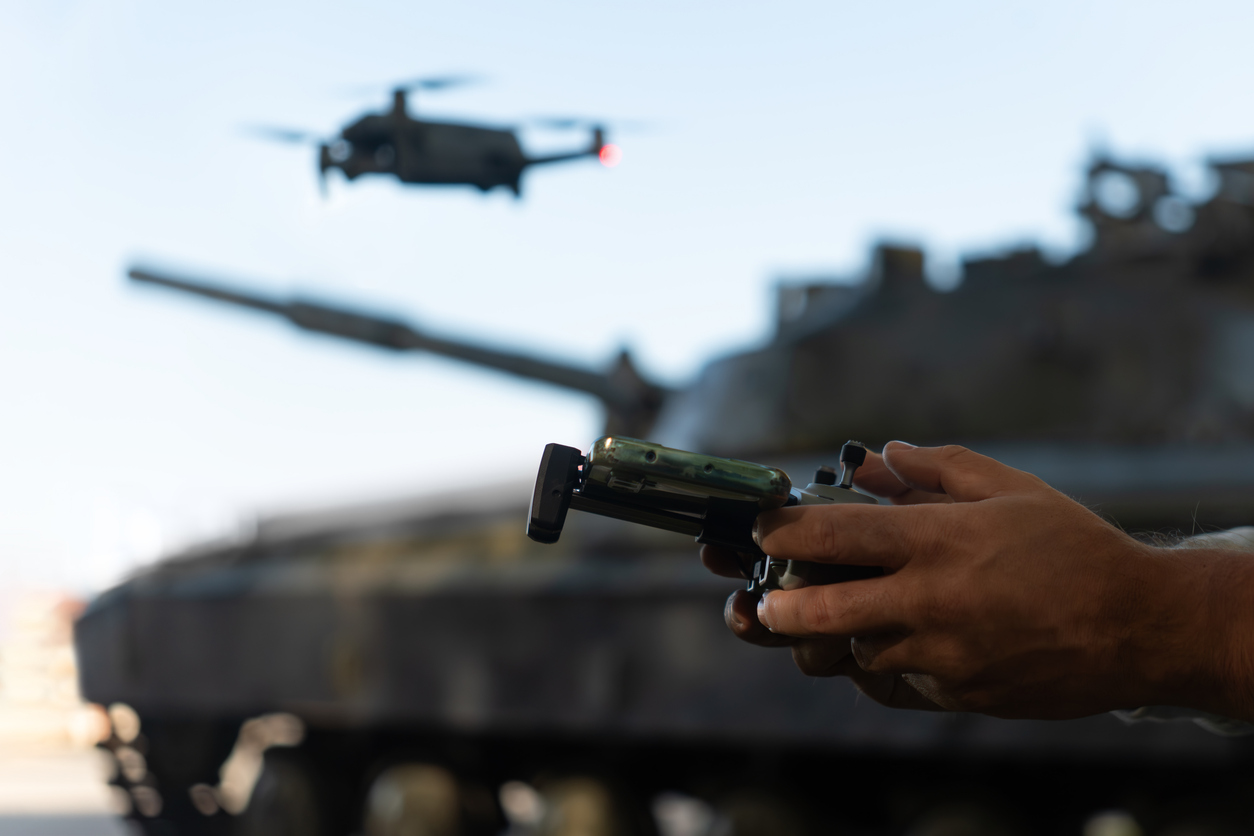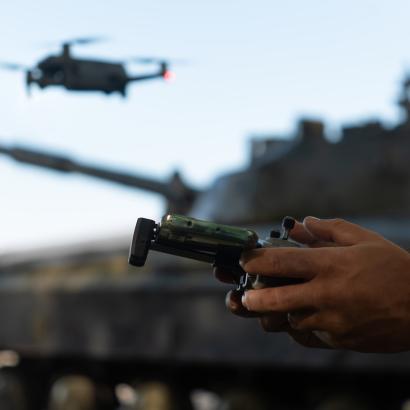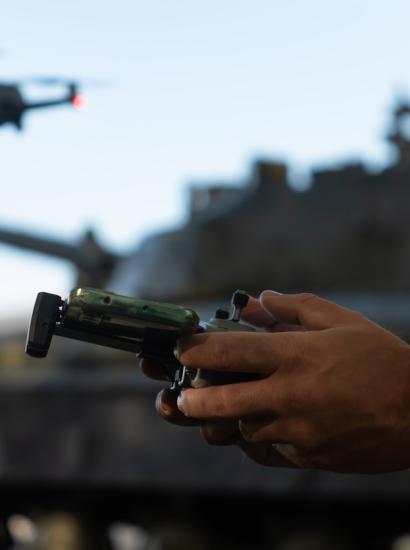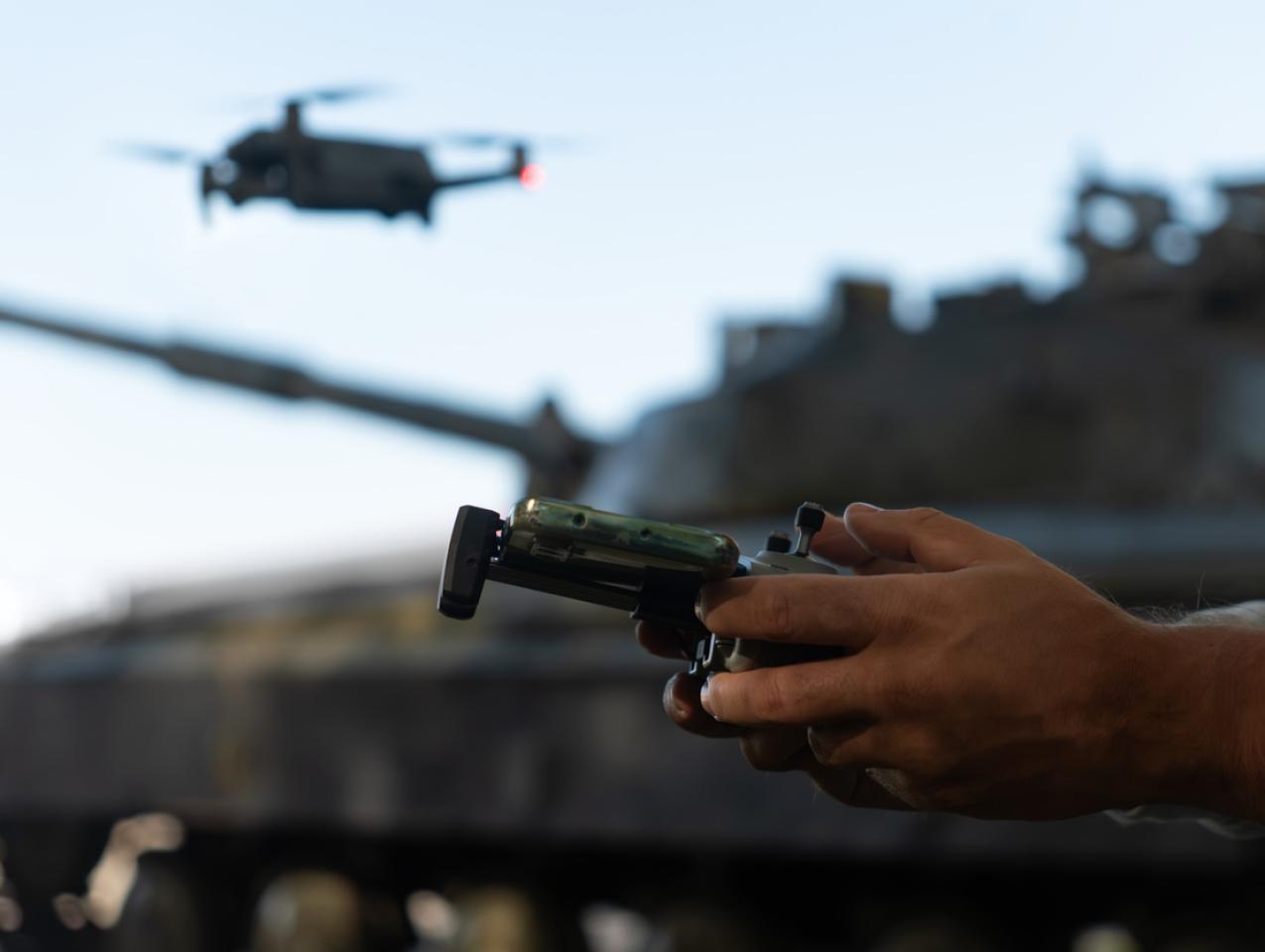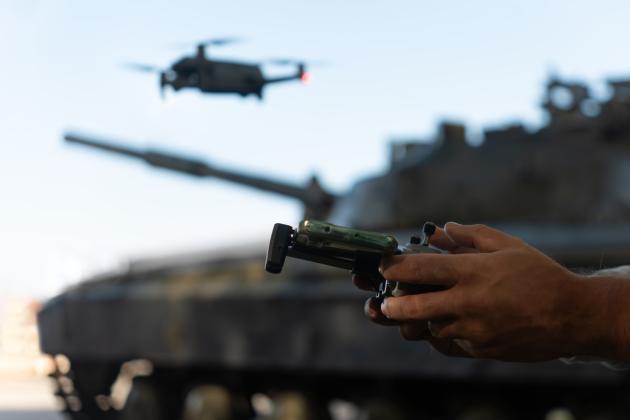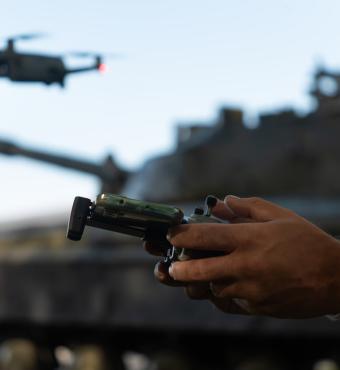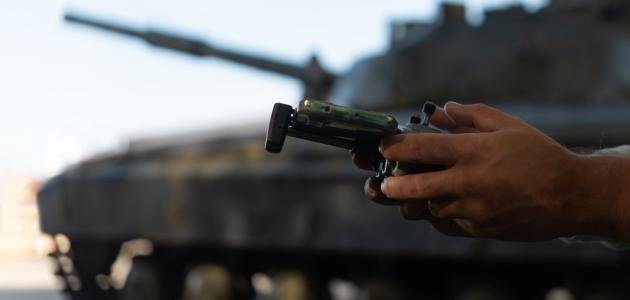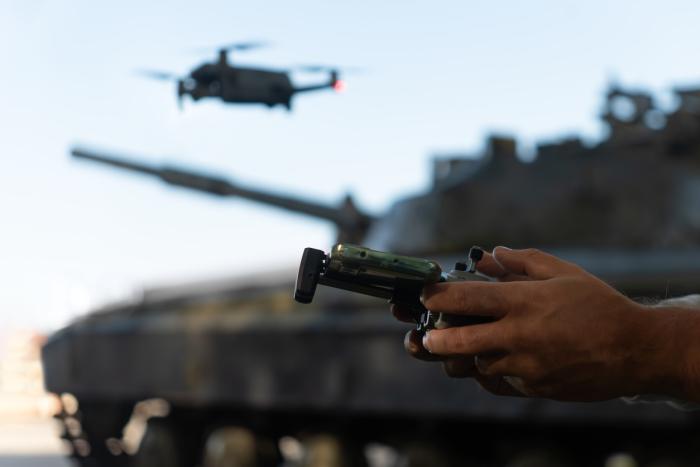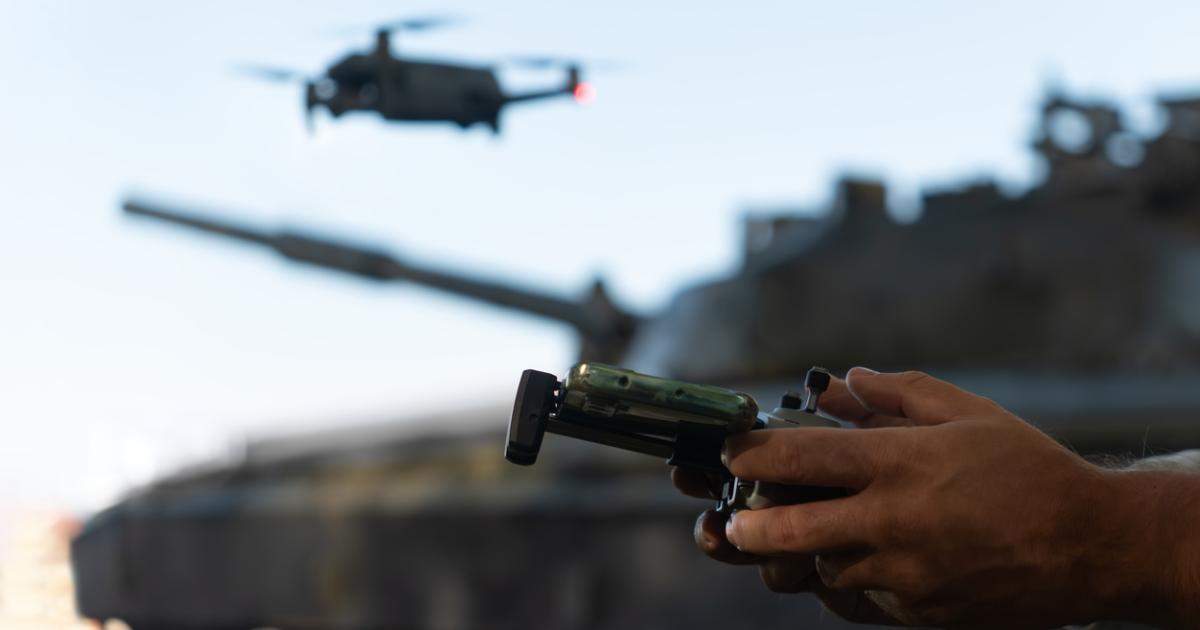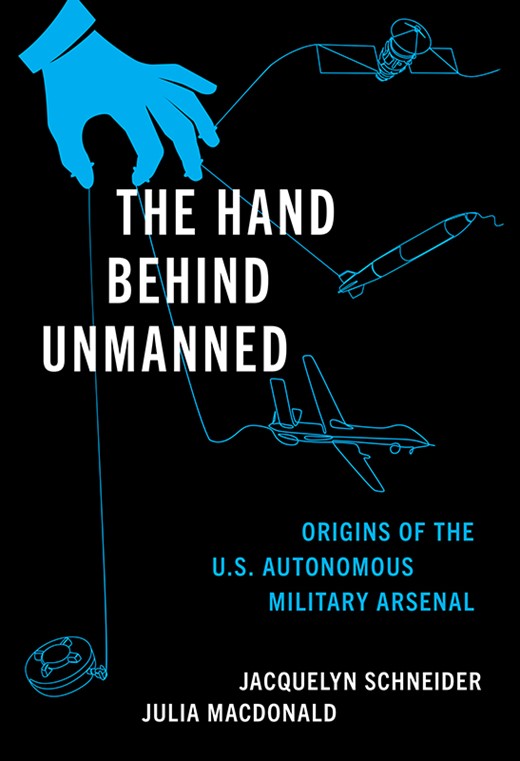- Security & Defense
- Innovation
- Military
- Determining America's Role in the World
Hargrove Hoover Fellow Jacquelyn Schneider is the co-author, with Julia Macdonald, of The Hand Behind Unmanned: Origins of the US Autonomous Arsenal (Oxford University Press, 2025), which investigates the dominance of today’s unmanned weapons.
For years, US drones like the MQ-1 Predator and MQ-9 Reaper dominated our vision of unmanned warfare. But that view of drone warfare—remote controlled from across the globe, exquisite, expensive—now looks out of date. It is not systems like the Predator or the Reaper that dominate the battlefields in Ukraine, Israel, or Iran, but instead cheap quadcopters, mines, and missiles. The “unmanned war” playing out in those battlegrounds at this moment is a story of intense and rapid experimentation and innovation. How are these wars changing our understanding of drones and warfare, and will they force the United States to re-evaluate its beliefs about unmanned technology and the future of the American way of war?
Ukraine is perhaps the battlefield where contemporary drones have been most prolific. Both Ukraine and an invading Russia have experimented extensively with drones, missiles, mines, and even unmanned naval and surface vehicles.
The drones that dominate that battlefield are not the expensive systems used by the United States during the war on terror, but instead are primarily short-range, commercial unmanned aerial systems. These small quadcopters employ first-person view, using thermal or electro-optic cameras to give a controller on the ground a bird’s-eye view of the battlefield through a helmet or a digital display. These systems are useful for intelligence, surveillance, and reconnaissance (ISR)—spotting enemy targets, cueing artillery or air support, and providing commanders with an understanding of the battlefield. But they are more than eyes in the sky. Many are armed with small anti-tank or anti-personnel munitions capable of attacking targets up to nine miles away; others carry remote mines that both Ukraine and Russia have used to slow down ground troops trying to take territory.
In perhaps the most dramatic use of small quadcopters, recently the Ukrainians secretly positioned hundreds of small drones in crates deep in Russian territory, launching them in a long-planned attack that took out a large number of long-range Russian bombers.
In addition to the small quadcopters, there are also heavier multi-rotor drones that feature greater payloads and ranges to carry larger munitions, ideal for bombing runs at night when drones are difficult to detect. These heavy drones are also invaluable for resupplying the battlefield, carrying ammunition, food, and even medical supplies to entrenched troops under the cover of darkness. The Ukrainian nickname for these types of drones is Baba Yaga, a reference to a mythical witch who flies around in a mortar and pestle, leaving havoc in her wake.
Probably the closest systems to the American MQ-1 or MQ-9 are longer-range ISR drones with coverage beyond eighteen miles of the front line, like the Russian Orlan-10 or 30, Zala 416, and the SuperCam. Ukraine operates similar systems, including the Shark. While these are probably the closest analogues to the American MQ-1, MQ-9, or Global Hawk aircraft—the Russian and Ukrainian systems are generally much smaller, operate at lower altitudes, and have far less range than the American unmanned aerial vehicles. The Ukrainian and Russian versions are also much, much cheaper and are generally embedded with troops instead of operated from across the globe.
Cheaper, better, deadlier
Note that as these drones start getting bigger and expanding their range, the distinction between a “drone” and a “missile” gets blurry, and so this category of weapons includes a variety of descriptions: “drone-missiles,” “one-way drones,” “kamikaze drones,” “remotely controlled missiles.” Add to this category what we traditionally understood as cruise missiles, ballistic missiles, and, sometimes, their hypersonic cousins. What they all have in common is that they are longer-range than quadcopters and other systems we would think of more categorically as a “drone.” They generally have larger warheads, operate at higher altitudes, and have some kind of late-stage seeker head so that the missile or drone has instructions about its intended target.
At the beginning of the conflict, Ukraine didn’t have a lot of these missiles in its inventory and was therefore very dependent on long-range missiles produced and given to it by the United States or the United Kingdom—often with significant caveats on what type of targets these missiles could be used against. But the Ukrainians are now producing their own cruise missiles and long-range drones with ranges of up to about six hundred miles. The Ukrainians have also been very innovative about how these systems are launched: building their own trucks, adapting US and European launchers, and jimmy-rigging Western missiles to fire from Russian-produced fighter aircraft.
And, while the Ukrainians have had to play catch-up, adapting their Soviet arsenal with European and homegrown technology, the Russians started the war with one of the world’s largest arsenals of long-range drones, cruise missiles, and ballistic missiles. Russia may be running through this arsenal at a remarkable pace, but it is also revitalizing its weapons stores with adaptations to missile technology and new weapons acquired from North Korean and Iran. These Russian missiles are becoming more precise and faster, all while Russia adapts its aging nuclear unmanned force to the conventional war it is fighting with Ukraine.
The unmanned war in Ukraine and Russia is far from stagnant. One of the big experiments is the tit-for-tat competition between remote-controlled drones, which depend on wi-fi and other wireless transmission methods to both control and receive information from the systems, and electronic warfare that targets these control mechanisms. Recently, the success of electronic warfare has led militaries to revert to fiber-optic cable to negate jamming of drones, an echo of the wire guidance used for many decades in older munitions.
Drone technologies in Ukraine have been instrumental to a host of different missions: battlefield reconnaissance, long-range reconnaissance, air defense, mining, counter-mining, logistics, and close-range and long-range strike. But how have they changed the conduct of warfare? By making it closer, less platform-focused, and slower—all the opposite of the “wars of maneuver” envisioned by American technologists after the Gulf War. They’ve also made war bloodier and more lethal—in contrast to visions of unmanned warfare as a substitution for human risk on the battlefield.
The economic arms race
Perhaps most resoundingly, drone technologies demonstrate how much stuff—manned and unmanned—any military needs to fight these new, modern wars. To keep up with this quantity of drones, missiles, and mines, countries must build domestic industries, carve out international and local supply lines, and build economies that can handle the long-term cost of sustaining these inventories. As defense analyst Michael Kofman explained in a recent interview for my podcast, The Hand Behind Unmanned, this is a problem of both bottom-up innovation and top-down investment in production:
They have to be cheap enough to be procured in large numbers because drones by both sides are produced. Now, at the range of maybe 1.5 million per year, but more than that, you’re essentially producing drones as you would produce artillery ammo. . . . You have to come up with munitions for them, too. So, to some extent, you also have a real evolution in munitions. It’s still a challenge because when things kind of branch very quickly, it takes other supporting parts of the defense industrial chain a while to catch up. . . . They have to be modified pretty quickly so you can evolve them fast. They have to be manufactured fairly quickly as well. . . . There’s always, for lack of a better term, a Hegelian dialectic between . . . the few, expensive, and complex versus the many simple systems. And this war had given much greater emphasis towards the many and the simple and the attritable and replaceable.
There are other lessons for the United States. The first is that true “autonomy,” for example swarms of AI-enabled machine warfare, is still far from a reality. Almost all the drones operating over Ukraine or Russia are still piloted, at some point, by humans. That’s significant because these “unmanned” technologies need a lot of people to make them useful on the battlefield. That means you can’t just invent the technologies, produce the technologies, and adapt the technologies—you also need to build a force to operate and maintain the systems as well as establish training and communications to use them effectively.
Perhaps the broadest lesson of the Russia-Ukraine war is that while these technologies have fundamentally changed how the war is fought, so far they have not brought either side to surrender or victory. The early days of the revolution in precision-guided munitions suggested that wars could be won at great distances with cruise missiles and precision-guided bombs. Today’s wars demonstrate the difficulty that these weapons still have in shifting the balance of power in a grueling war of attrition.
Iran and Israel: another battlefield laboratory
It’s not just Ukraine that is experimenting with unmanned arsenals. North Korea, Israel, Iran, even the Houthi rebels in Yemen are all leaning into missiles and drones. Most recently, drones played a pivotal role in Israel’s opening attack on Iranian leadership and nuclear sites. Like Ukraine, Israel smuggled small drones into Iran, and these systems launched a first wave of attack against Iranian air defenses, ostensibly allowing larger packages of Israeli manned fighters and long-range drones to evade surface-to-air missiles and successfully drop bombs on Tehran and Iranian nuclear facilities. Iran responded in kind, launching drones and missiles to spar with Israel, desperately trying to signal will and capability while playing a dangerous game of escalation control with volleys of unmanned weapons.
Iran built its missile and drone technologies on the assumption that the most important attribute of unmanned systems isn’t their range, precision, or lethality—but instead, their cost. Versions of the Shahad drone cost between $20,000 and $50,000, a bargain compared to US cruise missiles like the ALCM or air-to-air missiles like the AMRAAM that cost upwards of $1 million per munition. And Iran is happy to sell these technologies to whoever wants to buy, whether that be Russia to use against Ukraine; Hamas; or Houthi rebels shutting down shipping lanes in the Red Sea.
Yet Iran’s strategy may backfire. So far, its cheap drones and missiles have been unable to significantly penetrate Israeli (and US) air defenses. In the battle of expensive missiles, radar, and interceptors versus Iran’s cheap drone and missile volleys, so far quality seems to be winning over quantity.
But can Israel and the United States sustain the extraordinary cost of this interceptor arsenal? When Iran launched a large volley of missiles and drones at Israel in 2024, it cost Israel approximately $1.35 billion to defend against the intruders. It is unclear whether Israel and the United States can manufacture enough missiles fast enough to replenish their arsenals, and whether their budgets can afford to replenish systems at their current rate of use. The longer the conflict goes, the more cost becomes important to deciding who can sustain war long enough to achieve a strategic victory.
American decisions
Drones on the battlefield in Ukraine, Russia, Iran, and Israel demonstrate the extraordinary flexibility that these systems provide to militaries willing and capable to experiment, adapt, and innovate. For many, the American lag in the drone revolution is a question of capacity—not enough money invested in the companies or systems that make these new types of drones. But it’s more than that. The United States will need to re-evaluate the wars it wants to fight and whether the drone revolution, playing out in real time in Ukraine or Israel, can be a copy-paste for the future American way of war.







